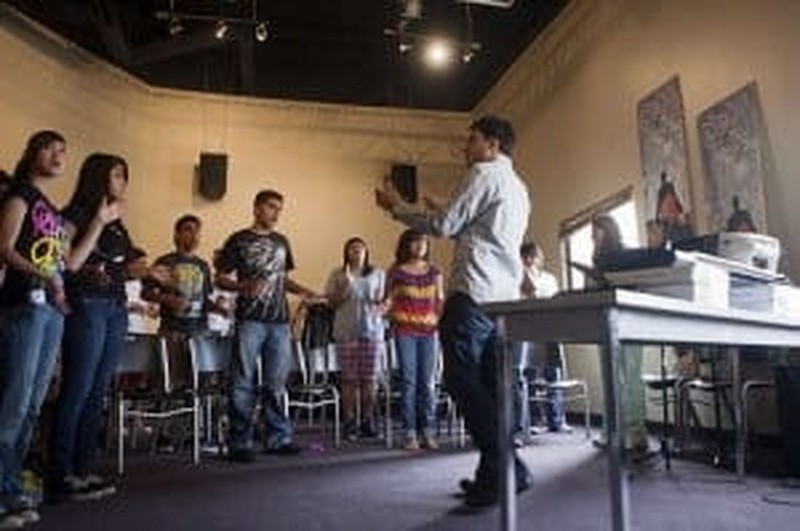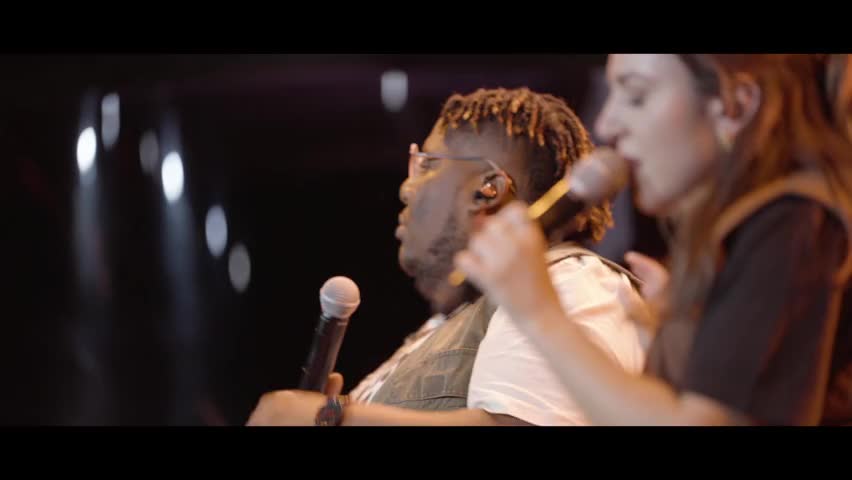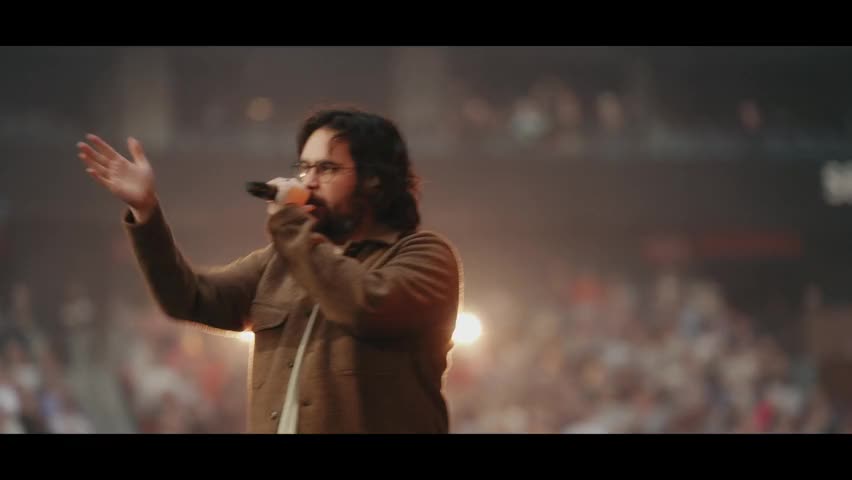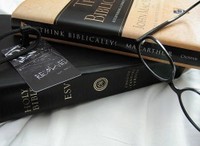
What is the history of the church’s use of worship music? Where there restrictions? What was acceptable and what was not? What made worship music either acceptable or rejected?
A Definition of Worship
What does the word worship mean? Worship comes from the old English word “worthscipe” or in the Old English spelling “weordhscipe” which means “worthiness” or in its simplest form, worth-ship. The word worship generally means “worthy of something.” That certainly fit’s the word’s use for when we worship God He is most certainly worthy and in fact the only One worthy to be worshipped.
The Greek word for worship is proskyneo and its Hebrew equivalent, shachac both refer to a posture of submission, thereby acknowledging God’s supremacy with an attitude of reverential fear. When both of these words are used as a verb (action, what you do) the postures indicate a bowing down and to kiss forward and each of these literally mean to touch the top of one’s forehead to the ground. Laying prostate is associated with these words. To me, this is the best position of all to pray in and for me, to worship God in. To be most reverential to God we should lay prostate on the ground or bow down with our heads touching the ground like subjects used to do before kings. How much more so for God Who is the King of kings? I believe this is the form of worship God is most pleased with and is most often found in the Bible. This doesn’t mean that lying down or kneeling or even standing up is wrong but the most reverential form of worship described in the Bible is that of laying prostate with your head to the ground. The word worship is often associated with sacrifice which might explain that God accepts the sacrifice of praise and worship. The Psalmist asked in 119:108 for God to “Accept my freewill offerings of praise, O LORD, and teach me your rules” and why the writer of Hebrews wrote, “let us continually offer to God a sacrifice of praise--the fruit of lips that openly profess his name” (Heb 13:15).
"The Truth" Psalm 99:9 Exalt the Lord our God, and worship at his holy mountain; for the Lord our God is holy!
Old Testament Worship Music
We know that David praised God by writing and singing the many Psalms (which basically is a song book). He would frequently play the harp or lyre (1 Sam 16:14-23), others played tambourines (Psalm 68:25) and there were definitely what we would call a woodwind section with so-called pipes and tabrets (1 Sam 10:5). There was a great variety in musical instruments used in the Old Testament as we read when the Ark was returned Israel in singing, music, and celebration in 2 Samuel 6:5 when “David and all Israel were celebrating with all their might before the Lord, with castanets, harps, lyres, timbrels, sistrums and cymbals.”
The Old Testament records that there was a string section; lyres, harps, and other stringed instruments as well. Then there was a percussion section; sistrums, cymbals, drums, castanets, timbrels, and tambrets or tambourines. Naturally there was a woodwind section; flutes and what are called “pipes.” There were also vocal arrangements ranging from a few to several hundred vocalists. These could have been spontaneous, Spirit-inspired vocals, solo performances or grand choirs on a scale of the great tabernacle choirs we might hear today.
New Testament Worship Music
Naturally, these same instruments that were being used in the Old Testament would be used during the times in which the New Testament was being written. Some instruments were used in the Temple during worship although to a lesser degree. As for the New Testament church, some instruments were used but not nearly to the extent of those used in the Old Testament period. We know that when Jesus and the disciples celebrated Passover, at the conclusion of the meal, they sang a hymn. Although the Bible is silent on there being instruments during the singing of this hymn, we can not rule out the possibility that there were instruments or an instrument that accompanied them in their singing this hymn. We also are not told what hymn was sung but it was likely from one of the Psalms.
Early Church Worship Music
The early church must have also used many of the Psalms which are even sung to this day. They could have had woodwind sections or stringed instruments. The use of drums seems to have been limited for one reason or another. Perhaps because much of the time the church didn’t want to attract too much attention, at other times worship services were held in underground locations for fear of persecution or death. There is also the consideration of the cost as percussion instruments were made of animal skins and metal works and the early church was not likely to spend generous amounts of money for such instruments.
Middle Ages Worship Music
The pipe organ was used as early as the 3rd Century B.C. by the Greeks. When bellows were added around the 6th and 7th Century, the organ was one of the most frequently used worship music instruments by the early church until the Middle Ages. By the 1700’s, the piano was invented and began to make inroads into church worship services and began to compete with the organ in worship music. More likely than not, the smaller version of the piano, the harpsichord, was being used by many of the churches that could afford them. They were considerably less expensive than the pipe organ or piano. There is evidence that the churches of this age continued to use woodwinds and stringed instruments and the use of drums or percussion instruments was still somewhat restricted due to the exorbitant cost.
The Gregorian Chant, a type of monophonic singing that is unaccompanied may have originated around the 9th or 10th centuries and is still widely used in many traditional Christian services today like the Roman Catholic Church. This chant’s creation is credited to Pope Saint Gregory the Great and is believed to be a combination of the Gallican and Roman chant. The Gregorian Chant was originally sang by men or boy choirs but today can include both male and female with both young and old and is still highly popular in man orthodox churches.
Contemporary Worship Music
The use of pipe organs still dominate many worship services today and in some places, that is all the accompaniment that they use, although the piano has consistently been used more frequently. Today the popularity of contemporary Christian worship music is growing. It is not so much the high tech synthetic keyboards, computers, and simulated instruments of contemporary worship music as it is the methodology or the construct of the music. The lyrics or words are seen as more important than the music that accompanies it. The addition of a full compliment of percussions (drums), electric and acoustic guitars and bass guitars are beginning to dominate some churches. Visual, overhead projections with the lyrics broadly displayed allows people to sing along with the bands. This often encourages corporate worship.
Check out another guest post from writer Jack Wellman as he highlights the book of Philemon: The Book of Philemon: Bible Story Summary, Key Verses, and Lessons.
Conclusion
It is hoped that worship music will not divide congregations more than they already have. We live in an era of the church where some churches divide over the color of the carpet, so divisions of the style of worship music will always be a frictional force in many churches. What is more important than the style of the music are what lyrics are used. God is the One being worshipped and whatever style the music is I believe is less important than what words are used. Surely the sentiment “In essentials, unity; in non-essentials, liberty; in all things love” applies not only in areas of doctrine that are not central to the gospel or where the Bible is silent, but also in areas of our styles of worship music. Only when the lyrics are unscriptural and non-biblical should there be reason to argue against them, whether these songs be old or new.
Paul’s admonition to the Corinthians might seem appropriate in this regard, “If I speak in the tongues of men or of angels, but do not have love, I am only a resounding gong or a clanging cymbal” (1 Cor 13:1) which we might use as a template for worship music if we change but one word and have it read “If I sing in the tongues men or of angels, but do not have love, I am only a resounding gong or a clanging cymbal.” Above all, let it be said that we be tolerant of other Christian’s style of worship music. We should be accepting of it because “love is patient, love is kind” (1 Cor 13:4a) for if I “do not have love, I gain nothing” (1 Cor 13:3b) and even with starkly contrasting styles of worship music we must always remember, “Love bears all things, believes all things, hopes all things, endures all things” (1 Cor 13:7).
Resources- ESV Holy Bible, www.youtube.com, photo credit: America Redefined via photopin cc
Guest Post By: Jack Wellman
















